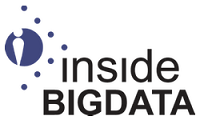
Press Coverage
Media Inquiries Contact:
Erica McShane, Vice President, Corporate Communications
pr@progress.com
Organizations plan to invest in 'human-centered' software
A new survey shows that 76 percent of respondents consider building human-centric applications more important than it was two years ago, driven by a combination of business considerations and cultural shifts.
Report: Companies are going all in on human-centric software development this year
While developers have always had to care about user experience, over the next year they will take this a step further by investing more heavily into what’s known as human-centric software development.
Barriers inhibiting uptake of human-centric app development
A recent global survey titled 'Human-Centered Software Design: A State of the Marketplace Report', conducted by Progress, an application development and infrastructure expert, exposed interesting insights in the area of human-centric app development in Australia.
Progress announced new powerful capabilities and enhancements in the latest release of Progress Sitefinity.
About 90% Indian Orgs Prioritizing Human-Centric Software, Accessible Apps: Report
A report on Wednesday revealed that about 90 per cent of Indian organizations are prioritizing human-centric software and accessible applications in comparison to the past two years.
Progress announced the results of its global survey, “Human-Centered Software Design: A State of the Marketplace Report.” Sponsored by Progress and conducted by independent research firm Insight Avenue, the survey is based on interviews with more than 700 application developers and IT decision-makers worldwide.
Has DevOps Lost its Luster? Exploring a Platform Engineering Future
Nearly two decades ago, proponents of the DevOps movement rallied against traditional software models that called for the developers who write code to be organizationally and functionally separate from those who deploy and support the code. Despite taking a few years, DevOps gained full adoption, and Agile development practices like automated build and test became the status quo after Gartner got on board with the concept in 2011.
AI’s Impact on Hiring: Keep the Human in Your Talent Acquisition Practices
AI is a tool like anything else. So, when I hear about AI in hiring, I think less about the AI itself and what it is capable of and more about how companies, teams and individuals may use it. Talent Acquisition (TA) and retention is a people-centered process: It wouldn’t be wise to overuse AI or replace TA with AI.
The insider’s guide for budget-conscious marketers
Whether you’re a startup entrepreneur, a small business owner, or a seasoned marketer aiming to do more with less, join us as our amazing experts uncover cost-effective solutions, clever hacks, and ingenious approaches to stay ahead of the curve in an increasingly competitive market.
Breeding Customer Loyalty Through the Omnichannel Experience
On the consumer end, the average purchase—of a suitcase, a desk lamp, or an electric toothbrush—can feel relatively simple. But as any marketer knows, the path from noticing a product to actually buying it can, in fact, be enormously complex, facilitated on the backend by multiple teams working day in and day out on such complicated matters as UX design, behavioral analytics, and targeted ad copy. The better integrated these components are across platforms—i.e., the more seamless the experience is for the consumer—the higher the likelihood of a sale.
Unconscious Bias in AI: How to Avoid it and Navigate Regulation
The human brain processes an inordinate amount of information every day. Scientists have tried to quantify it, with some saying it is 100,000 words and others suggesting it is 34GB of data. Regardless of the study, they all agree it is a massive amount. And as an evolved species, humans have found ways to quickly process much of that information without it even registering they are doing it.
Progress announced a strategic partnership with Veeam Software, the #1 leader by market share in Data Protection and Ransomware Recovery, to provide customers with an enterprise-ready cyber defense solution that strengthens the security of their business-critical data.
How embracing neurodiversity in the workplace can help companies; insights from expert
Embracing neurodiversity in the workplace is not just a social obligation but also a business benefit. Organizations may achieve creativity, productivity enhancement, and the promotion of an inclusive and welcoming culture by acknowledging and using the unique abilities of neurodiverse people. Organizations that have neurodiversity as a top priority are able to recruit a more extensive range of skilled persons and are seen as appealing employers by people with various backgrounds and skills.
Diverse Minds, Infinite Possibilities: Neurodiversity At Workplace
Neurodiversity, the concept that neurological differences are normal and valuable, is increasingly recognised as essential in today's work environment. Shirley Knowles, Chief Inclusion & Diversity Officer at Progress believes that embracing neurodiversity fosters innovation, creativity, and problem-solving by harnessing the unique perspectives and talents of individuals with diverse cognitive abilities. Inclusive workplaces that value neurodiversity not only benefit from a wider talent pool but also cultivate a culture of acceptance and belonging, leading to increased employee engagement and overall organizational success.
The true benefits of composable IT architecture
The notion of composable architecture as a way to generate greater business agility and scalability is nothing new in the tech world. Composable architecture breaks down traditional silos for application deployment and management. In fact, a recent report in Gartner’s most-read research category, Hype Cycles, has ranked composable infrastructure as having a “high” benefit rating that will result in significantly increased revenue or cost savings for an enterprise of any size.
Usability testing without a UX specialist
The end goal for any company is to meet the needs of its users. Companies that use software to solve problems/meet user needs are no exception. It is understandable that amidst the daily turmoil of producing and fixing, creating and deploying, it can be easy to lose sight of the primary objective: helping users.
The appeal of hybrid cloud deployments is undeniable. They offer the agility and scalability of the public cloud plus the control and security of on-premises infrastructure for any systems or data needing more protection. However, using a hybrid model introduces additional challenges for IT teams. Visibility limitations often plague hybrid deployments. This means IT teams need extra help to identify security threats, deliver robust operations and maintain optimal performance levels.
Go Beyond Just Integrating Data: Discover the Meaning Behind Your Data
The goal of knowledge management is quite simple: put the right information in front of the right person at the right time to enable better, more informed and contextualized decisions. And the ability to make those decisions usually lies deep in a company’s data—particularly, its metadata.
Embracing the Agile Data Platform: A Key to Business Survival Today
As the volume and variety of data continues its exponential growth year after year, mastering that data—capturing, analyzing and utilizing it effectively to make informed decisions is becoming fundamental to business survival. To succeed and thrive in this environment requires businesses and organizations to embrace a culture of continuous learning, rapid adoption of insights and the seamless integration of modern technologies.
Inspiring Inclusion: it’s a group effort
The world has come a long way since the first International Women’s Day rally 113 years ago, but there is still a notable distance to go before gender equality is achieved. Within the technology sector in particular, despite having produced some of the most renowned female figures in history - from Ada Lovelace to Marie Curie - women still only represent 26% of the workforce and 5% of management.

















